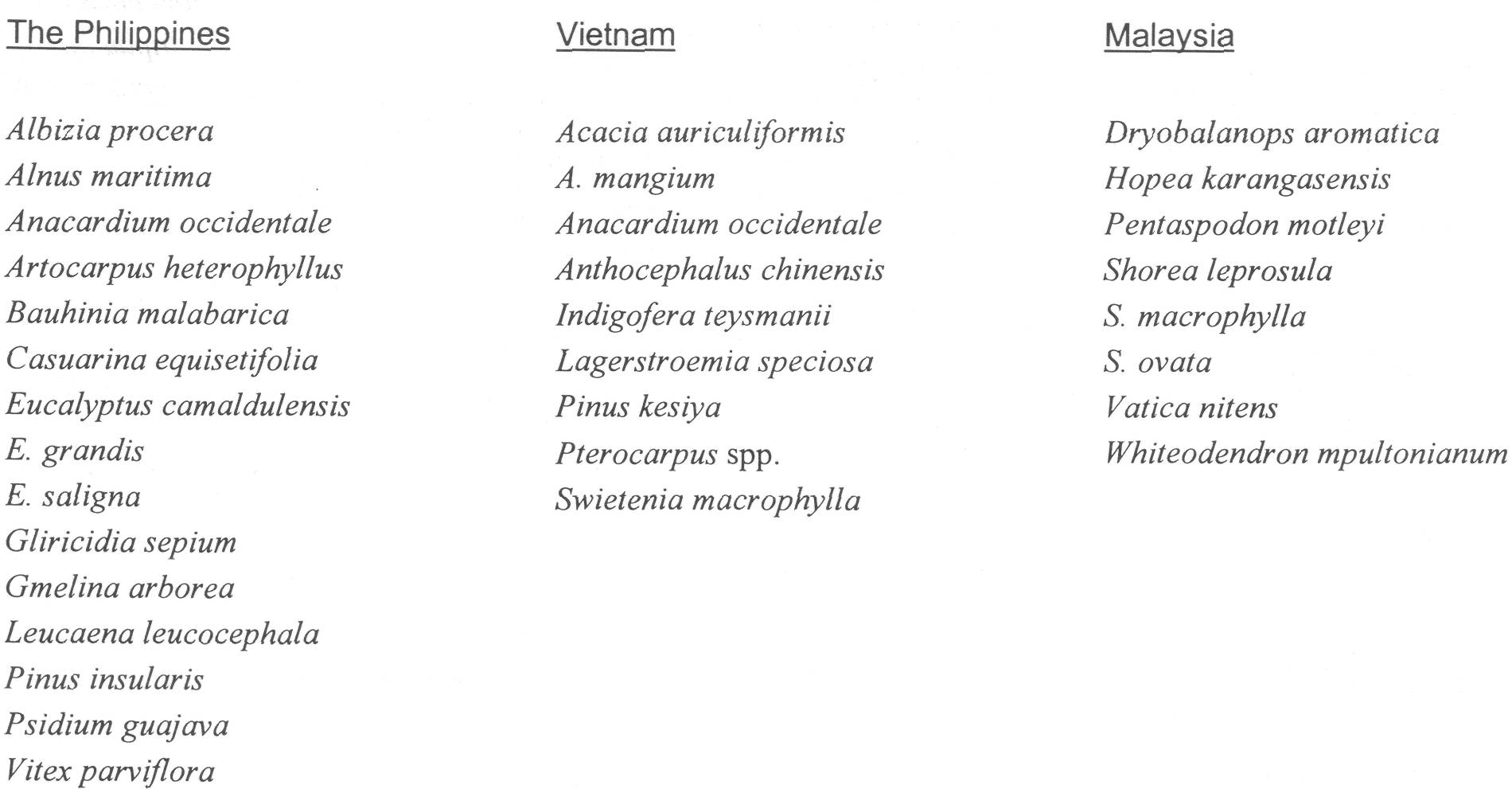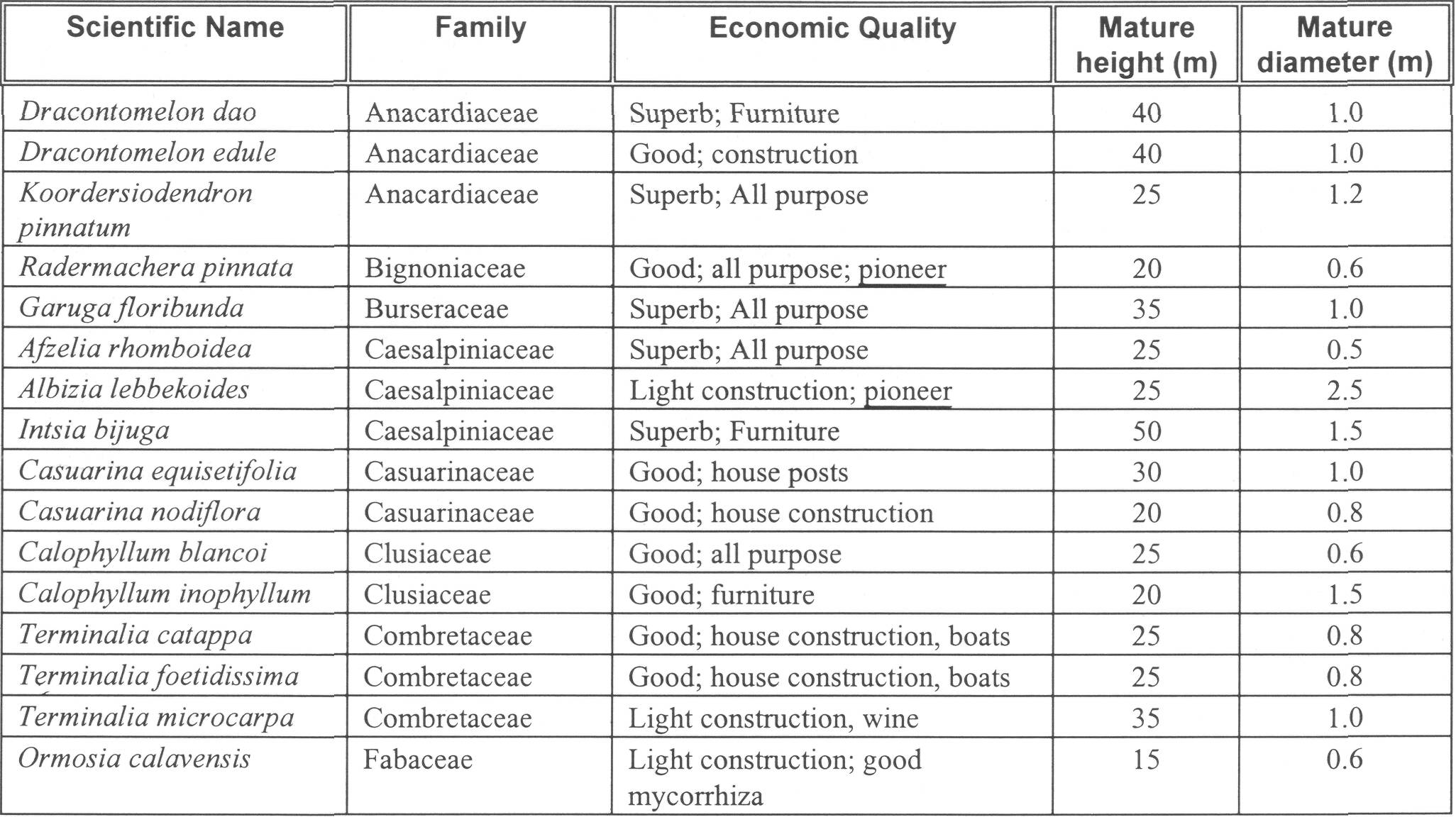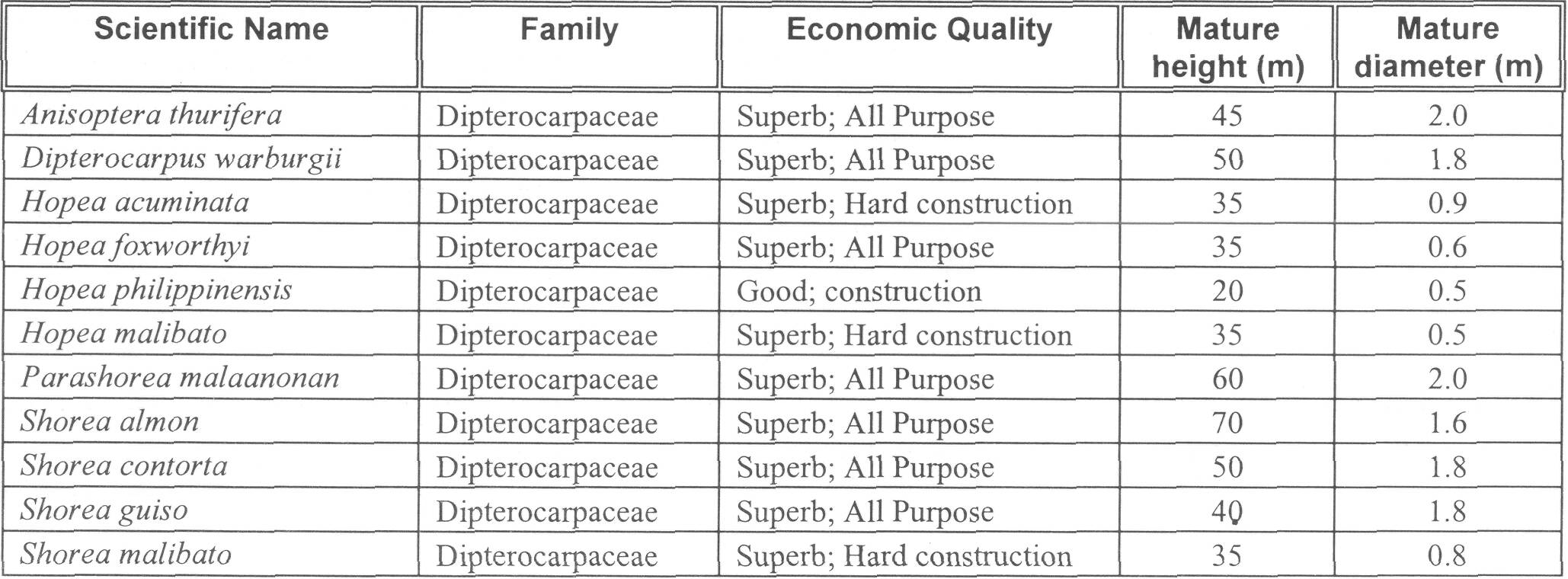|
Table 1. Plantation species reported to
successfully control Imperata.
Note: not all species always succeed; Imperata often continues to
grow under Eucalyptus and Pinus species and Paraserianthes falcateria.


Table 2. Site requirements of common plantation
species in Imperata grasslands.
Numbers in parentheses indicate conditions for less favorable sites.

Table 3. Sun-demanding trees that can be planted
into grasslands. All are native Philippine species recommended for areas
with no pronounced dry season.


Table 4. Shade-demanding trees to be planted a
year or more after nurse trees have been planted. All are native
Philippine species recommended for areas with no pronounced dry season.
Desirable characteristics (not all found in all species shown in this
table):
-
Adjustable to a wide range of soil and light conditions
-
Seeds and seedlings are easy to recognize, so germination and
seedling management is easy
-
Withstands transplanting to the field
-
Resistant to strong winds
-
Young shoots have the ability to grow through thickets or canopies
of pioneer species


|



